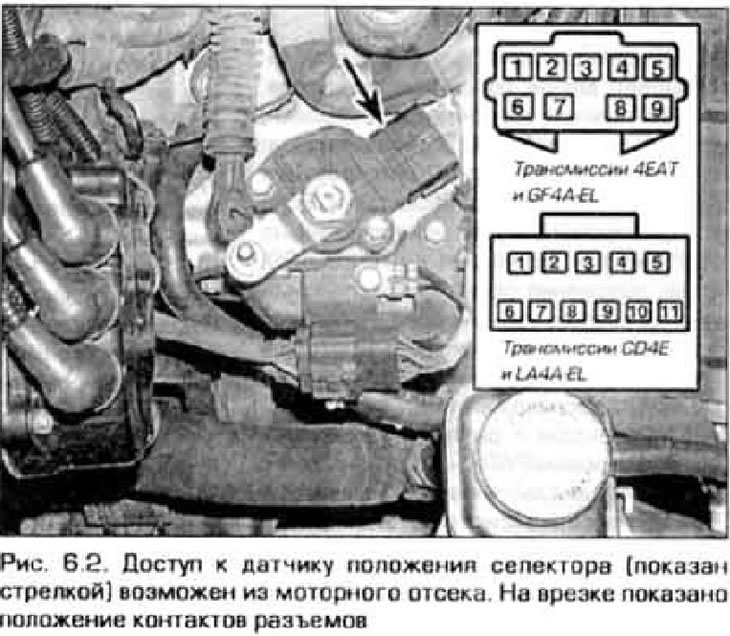Examination
1. Access to the sensor for testing is possible from the engine compartment.
2. Disconnect the sensor electrical connector (pic. 6.2).

Note The sensor on 4EAT and GE4AEL transmissions has a 9-pin connector, and on CD4EnLA4A-EL transmissions it has an 11-pin connector.
3. Move the selector lever alternately to each position and measure the resistance between the connector contacts indicated in the tables.

4. If the resistance between the contacts does not match the table, try retouching the sensor (see below). If the sensor cannot be adjusted, replace it.
Adjustment (4EAT and GF4A-EL transmissions)
Note. Fine adjustment of the sensor on 4EAT and GF4A-EL transmissions requires a special tool.
5. Place selector lever in neutral position (Neutral). Disconnect the cable from the position sensor (see paragraph 4).
6. Slightly loosen the sensor mounting bolts. Turn sensor to Neutral (pic. 6.6).

7. Disconnect the sensor electrical connector and connect an ohmmeter to the pins to check the Neutral position (see check tables above). The ohmmeter should show infinity.
8. Tighten the sensor connectors and attach the cable.
9. Pass all positions of the selector and check up resistance between contacts. as indicated in paragraphs. 1-4.
Replacement
10. Raise the vehicle and place it on jack stands.
11. Disconnect the electrical connector from the selector position sensor.
12. Set the selector lever to the Neutral position.
13. Turn out bolts of fastening of the gauge and remove the gauge from transmission.
14. Install the new sensor on the shaft.
15. Adjust the position of the sensor, as indicated in paragraphs. 5-9 and tighten the sensor mounting bolts.
16. Make sure the engine can only be started in Neutral or Park.
